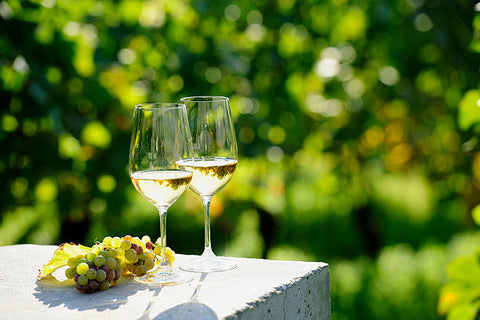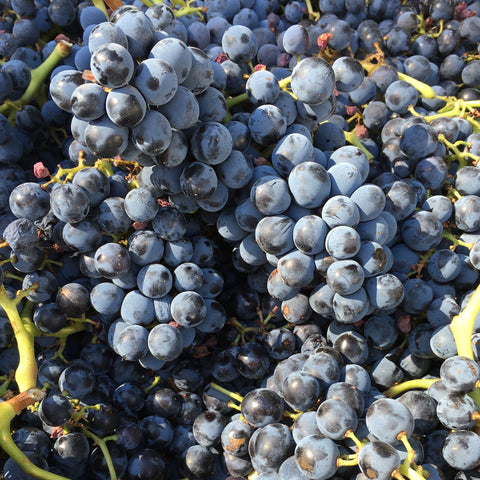When it comes to pairing wine with lamb or steak, Shiraz and Cabernet Sauvignon are often the stars of the show. But how do you choose between these two iconic reds? Both Red wines have their own strengths, and the choice ultimately depends on the dish and your personal preference. Let’s dive into what makes each of these wines unique, and how to pair them perfectly with your favourite cuts of lamb or steak.
Shiraz: Bold and Spicy
Shiraz, often known as Syrah in other parts of the world, is a quintessential Australian wine. It’s bold, fruity, and packed with notes of blackberries, plums, and a hint of peppery spice. This makes it a fantastic companion for rich, hearty meats like lamb. The peppery undertones in Shiraz complement the gaminess of lamb, especially if the meat is seasoned with herbs like rosemary or thyme. For steak, Shiraz shines when paired with fattier cuts like ribeye. The wine’s tannins cut through the richness, balancing the flavours and enhancing the steak’s juiciness.
Cabernet Sauvignon: Structured and Sophisticated
Cabernet Sauvignon, on the other hand, is all about structure. With its firm tannins and classic notes of blackcurrant, cedar, and a touch of mint, it’s the ideal choice for more robust dishes. This wine is a natural pairing for steak, particularly leaner cuts like sirloin or fillet. Its tannins and acidity work in harmony with the steak’s texture, creating a balanced bite every time. When it comes to lamb, Cabernet Sauvignon is a winner with grilled chops or slow-cooked shanks, as the wine’s boldness holds up beautifully to the meat’s intensity.
Selecting the Right Bottle
When choosing a Shiraz or Cabernet Sauvignon, opt for bottles that complement the preparation of your dish. For Shiraz, go for medium to full-bodied options with a balance of fruit and spice. Australian Shiraz from regions like Barossa Valley or McLaren Vale are excellent choices. For Cabernet Sauvignon, look for wines with complexity and a good balance of tannins and acidity. Coonawarra and Margaret River produce some of Australia’s best examples. If you’re looking for tailored recommendations, feel free to contact us for expert guidance.
Key Features of Shiraz and Cabernet Sauvignon
- Shiraz: Known for its bold fruitiness, peppery spice, and smooth tannins. Perfect for rich, fatty meats like lamb and marbled steak.
- Cabernet Sauvignon: Offers structure, depth, and classic blackcurrant and mint notes. Works beautifully with leaner cuts of steak and robust lamb dishes.
- Versatility: Both wines can handle a range of cooking methods, from grilling to slow-cooking.
- Regional Variety: Australian Shiraz and Cabernet Sauvignon are globally renowned, with unique expressions depending on the region.
Proper Handling for the Best Experience
To enjoy your Shiraz or Cabernet Sauvignon at its best, serve it at the right temperature—15-18°C is ideal. Decanting the wine for 30 minutes to an hour can help open up its flavours, especially for younger bottles. Use wide-bowled glasses to allow the wine to breathe and enhance its aroma. When storing, keep your bottles in a cool, dark place, ideally on their sides to keep the cork moist.
FAQ Section
1. Can I pair Shiraz or Cabernet Sauvignon with other meats?
Absolutely! Shiraz pairs well with spiced pork and barbecue dishes, while Cabernet Sauvignon is excellent with game meats and rich poultry like duck.
2. What’s the difference between Shiraz and Syrah?
They are the same grape variety, but Shiraz refers to the bold, fruit-forward style often associated with Australia, while Syrah is used for more restrained, Old World-style wines.
3. Can I serve these wines chilled?
Both wines are best served slightly cool, but not chilled. Aim for 15-18°C to fully appreciate their complexity.
4. Do I need to decant these wines?
Decanting is recommended, especially for younger Shiraz or Cabernet Sauvignon. It softens the tannins and enhances the aromas.
5. What side dishes pair well with these wines?
For Shiraz, think roasted vegetables, creamy mashed potatoes, or spiced couscous. Cabernet Sauvignon pairs well with green beans, potato gratin, or grilled asparagus.
Whether you’re a Shiraz enthusiast or a Cabernet devotee, both wines bring something special to the table. By understanding their strengths and matching them to your dish, you’ll elevate your dining experience to a whole new level. Cheers!
McLaren Vale Cellars offers a remarkable selection of both Shiraz and Cabernet Sauvignon, perfect for pairing with your favourite meals. If you’re searching for exceptional quality and expert advice, you can’t go wrong with McLaren Vale Cellars.




Comments (0)
There are no comments for this article. Be the first one to leave a message!